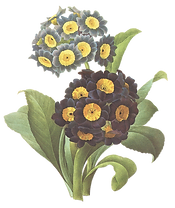Calendula - the healing herb
- Denise Timofai
- Apr 3, 2016
- 2 min read

Calendula Officinalis is also known as pot marigold or garden marigold. It is a perennial in warm regions although it remains an annual in colder regions or tropical regions where it is too hot. Native to southern Europe, it easily grows in sunny locations and most types of soil.
Calendula is considered by many gardening experts as among the easiest and most versatile flowers to grow in a garden. The blooms last throughout the summer and well into the fall. Pot marigolds typically bloom quickly from seed (in under two months) in bright yellows, golds, and oranges. The florets are edible and often used to add color to salads or as a garnish. The leaves are also edible but are often not palatable. Flowers were used in ancient Greek, Roman, Middle Eastern, and Indian cultures as a medicinal herb as well as a dye for fabrics, foods, and cosmetics. They are also used to make oil that protects the skin.
Calendula is considered a Mars (Tuesday) tincture due to its’ healing abilities.
Health Benefits of Calendula
Calendula is known for its’ strong healing properties. It can be used internally and even topically. It is great for:
wounds
cuts
bedsores
diaper rash
scrapes
burns/sunburn
ulcers-skin, stomach and mouth
acne
herpes
skin infections
hemorrhoids
dermatitis
eczema
insect bites and stings
chapped skin
rashes
surgeries
Calendula is also known to help with eye infections, inflammations and conjunctivitis. It helps to reduce the swelling and redness.
Calendula is antifungal and can be used to treat athlete’s foot, ringworm and candida.
It is known as an anti-inflammatory herb and can be used for sprains, muscle aches, cramps and menstrual cramps. Also great for internal inflammation such as gastrointestinal ulcers & genitourinary inflammation.
Add drops to water and gargle with it for a sore throat or after dental work.



Comments